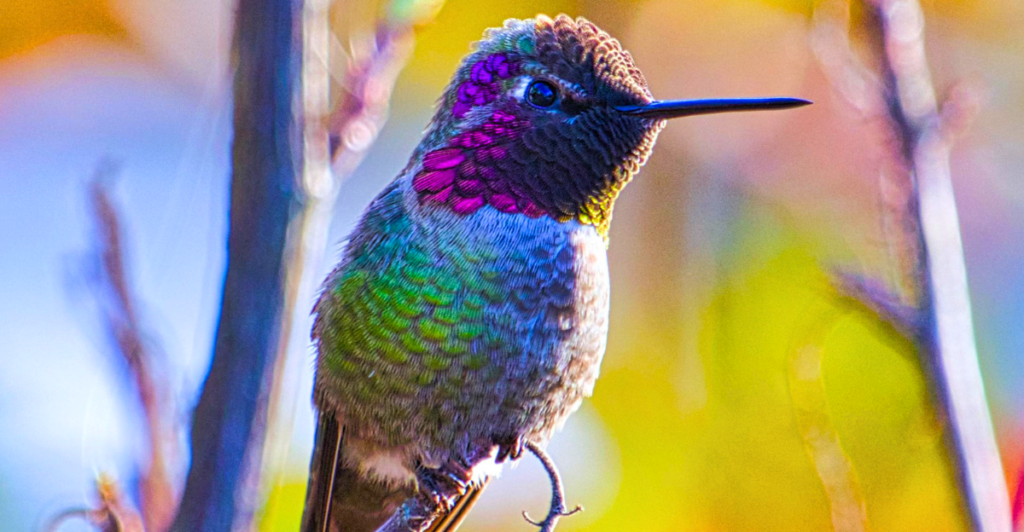
Hummingbirds are nature’s tiny marvels—fast, agile, and dazzlingly colorful. With their iridescent feathers, rapid wingbeats, and remarkable aerial acrobatics, these birds fascinate birdwatchers and nature lovers alike. While over 300 hummingbird species exist worldwide, only a select few are found exclusively in the United States. These are twelve gorgeous hummingbird species found only in the U.S.
1. Ruby-throated Hummingbird
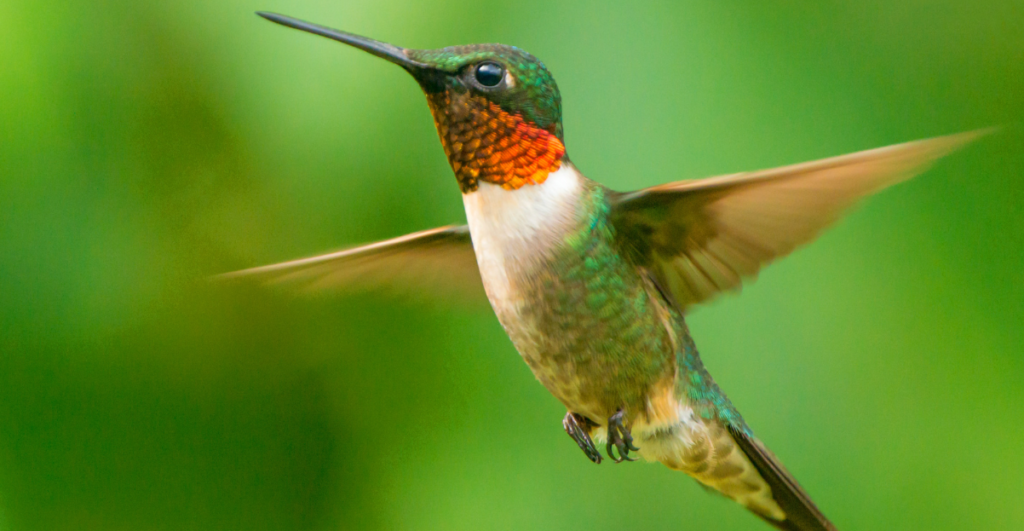
The Ruby-throated Hummingbird is a small but mighty species, weighing only about 3 grams. These birds inhabit the Eastern part of the United States. Males have a brilliant ruby-red throat, while females lack the red throat but have white-tipped outer tail feathers. They’re incredibly agile, capable of flying backwards and hovering, and can beat their wings between 50 to 80 times per second.
2. Anna’s Hummingbird
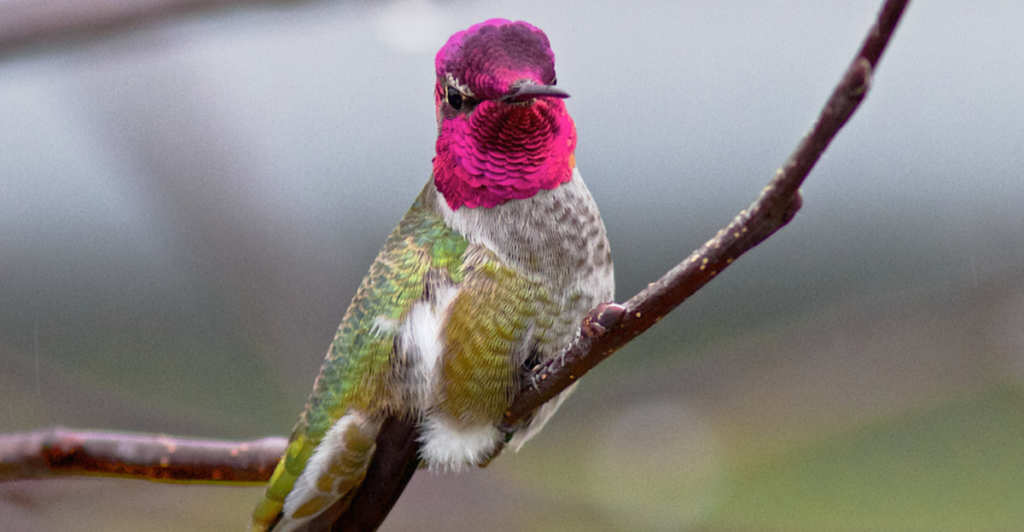
Anna’s Hummingbird is a medium-sized hummingbird found in the southwestern part of the United States. They are also common along the West Coast, from southern Alaska to Baja California. Males have a striking iridescent crimson-red crown and gorget, which can sometimes appear dark or golden. These birds are known for their impressive courtship displays, where males climb up to 130 feet in the air before diving steeply towards the ground, producing a loud chirp with their tail feathers.
3. Costa’s Hummingbird
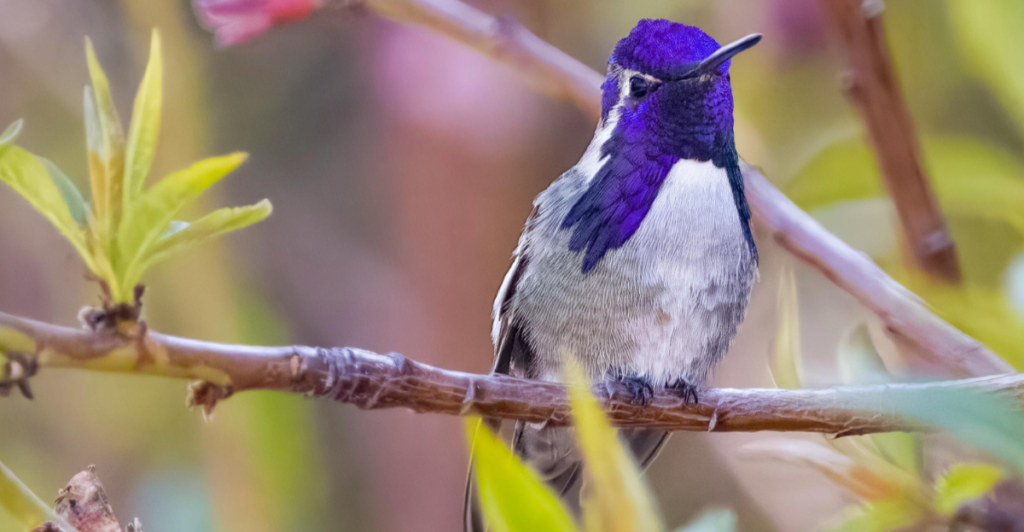
The Costa’s Hummingbird is a desert-dwelling species found in the southwestern United States. Males are distinguished by their brilliant purple crown and gorget, which extend to the sides of their neck, forming a distinctive “mustache.” These birds are well-adapted to hot, dry environments and can enter a state of torpor to conserve energy during cold desert nights.
4. White-Eared Hummingbird
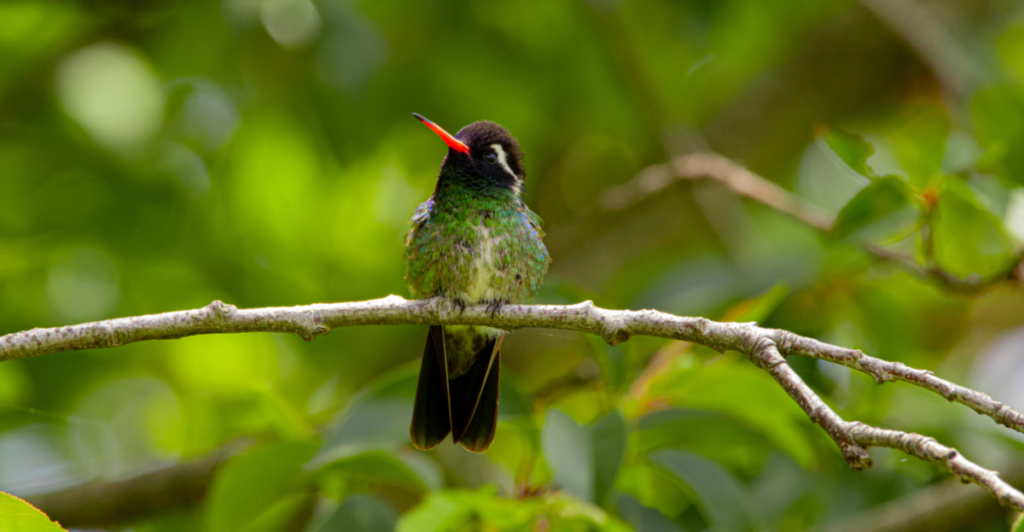
The White-eared Hummingbird is a striking species found in the mountainous forests of the southwestern United States, particularly in Arizona, New Mexico, and occasionally Texas. Named for the bold white stripe behind its eye, this medium-sized hummingbird features a shimmering green body, a dark face, and a red bill tipped with black. Males display an iridescent turquoise-green throat, while females have a more subdued coloration.
5. Berylline Hummingbird
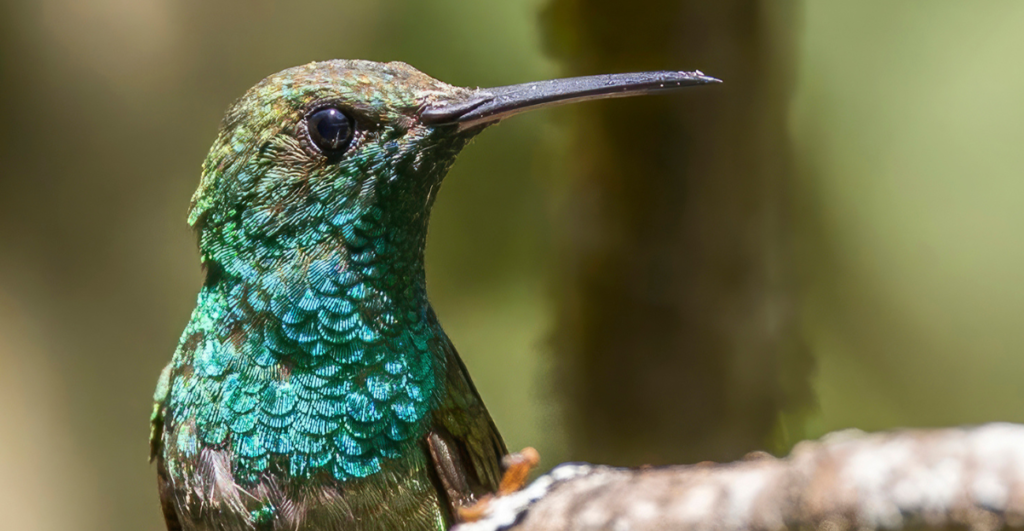
The Berylline Hummingbird is a rare but beautiful species found in the southwestern United States, primarily in southeastern Arizona during the summer months. This medium-sized hummingbird is named for its stunning shimmering green plumage, which covers most of its body, contrasted by a rich coppery-bronze patch on its wings and back. Both males and females share similar coloration, making them one of the few hummingbird species where the sexes are not drastically different in appearance.
6. Violet-crowned Hummingbird
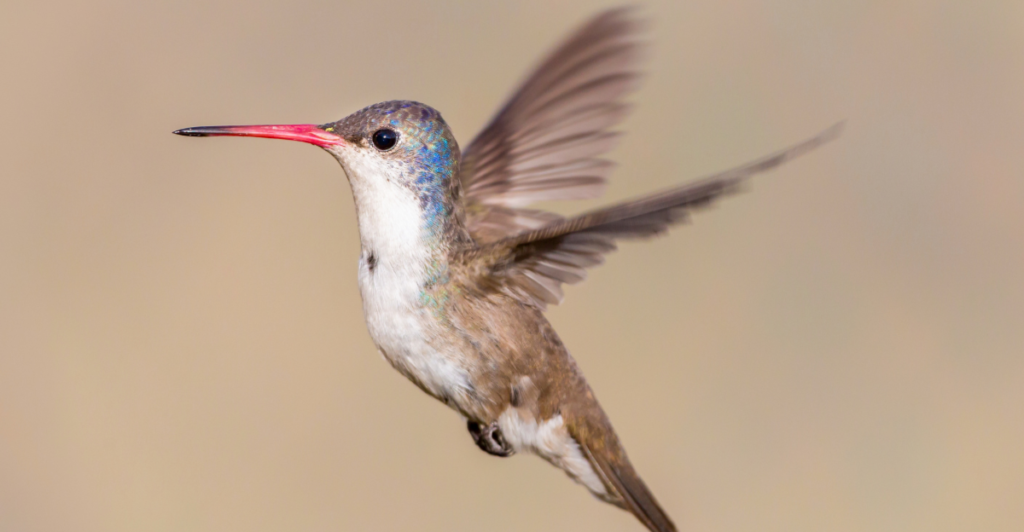
The Violet-crowned Hummingbird is notable for its white underparts and red bill with a black tip. Both males and females have a violet-blue crown, though it may appear dark in poor lighting. These birds are typically found in riparian woodlands and are known for their calm demeanor compared to other hummingbird species.
7. Broad-tailed Hummingbird
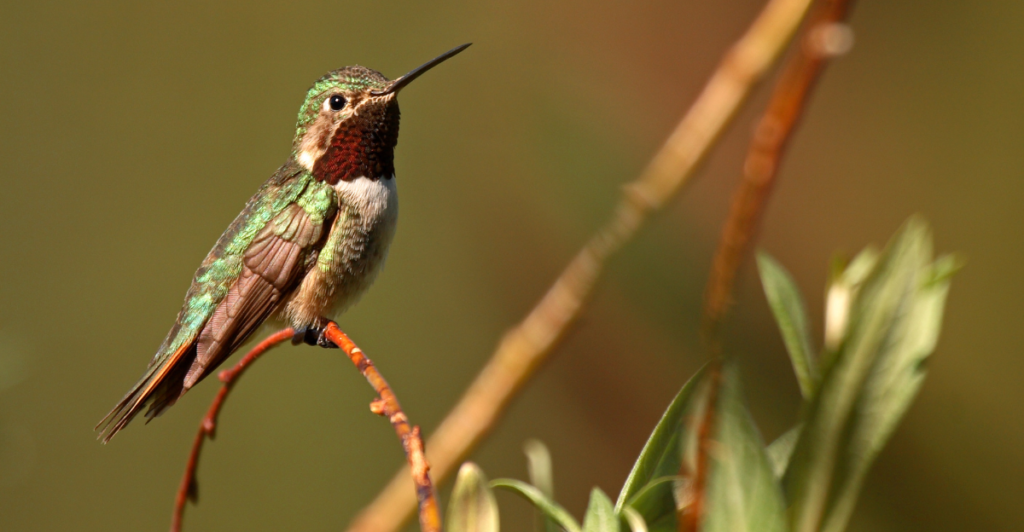
The Broad-tailed Hummingbird is a medium-sized hummingbird found in high-elevation habitats. Males produce a distinctive metallic trilling sound with their wings during flight. These birds are important pollinators in their mountain meadow habitats and are known for their ability to enter torpor to survive cold nights.
8. Allen’s Hummingbird
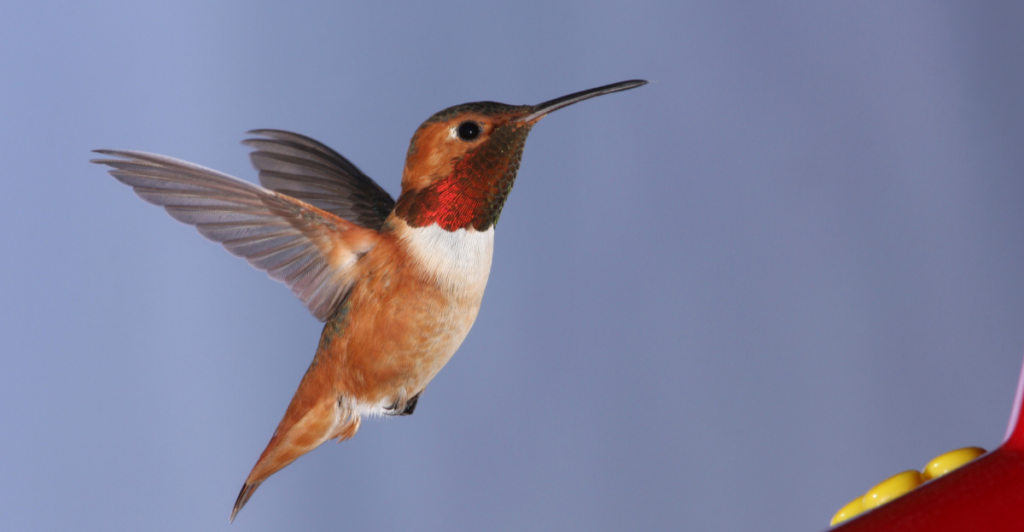
Allen’s Hummingbird is known for its bright rufous coloration and green back. Males perform elaborate courtship displays, climbing up to 100 feet before diving steeply with a distinctive buzz. These birds have a very limited breeding range and are considered a species of conservation concern due to habitat loss.
9. Rufous Hummingbird
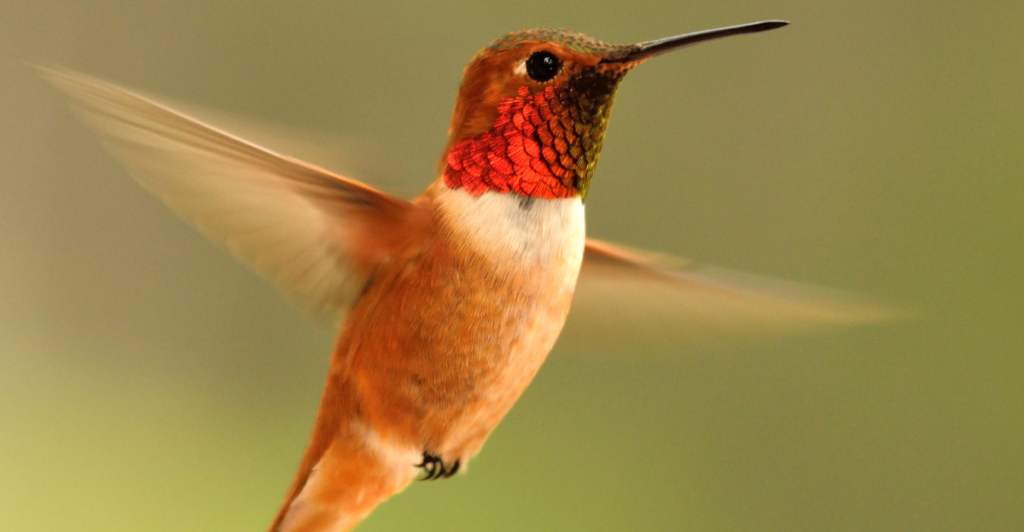
The Rufous Hummingbird is known for its extensive migration, traveling up to 4,000 miles from Alaska to Mexico. Males are almost entirely bright orange-red, with a vivid iridescent red throat. These birds are exceptionally territorial and are known to chase away much larger birds from their preferred feeding areas.
10. Black-chinned Hummingbird
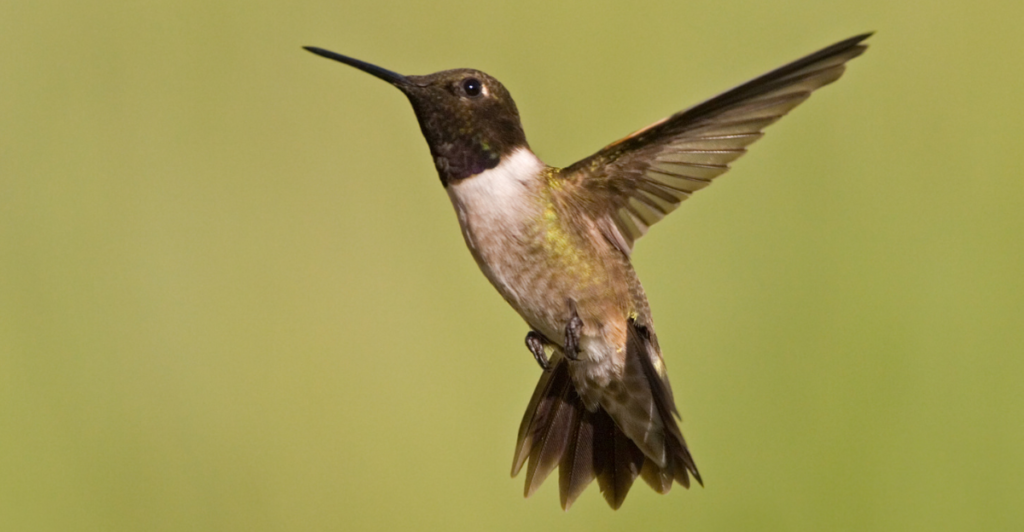
The Black-chinned Hummingbird is a widespread and adaptable species. Males have a black chin with a thin strip of iridescent purple at the base, which can be difficult to see in poor light. These birds are known for their ability to thrive in a variety of habitats, from desert riparian areas to urban gardens.
11. Calliope Hummingbird
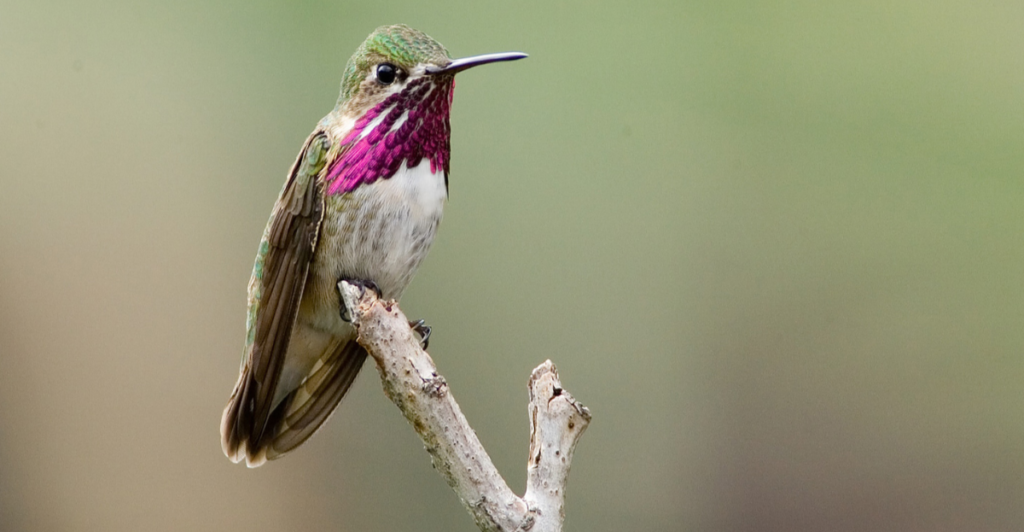
The Calliope Hummingbird is the smallest bird native to North America and Canada, weighing about as much as a penny. Males have a unique magenta starburst pattern on their throats. Despite their tiny size, these birds make an impressive migration from the northwestern U.S. and southwestern Canada to southern Mexico.
12. Broad-billed Hummingbird
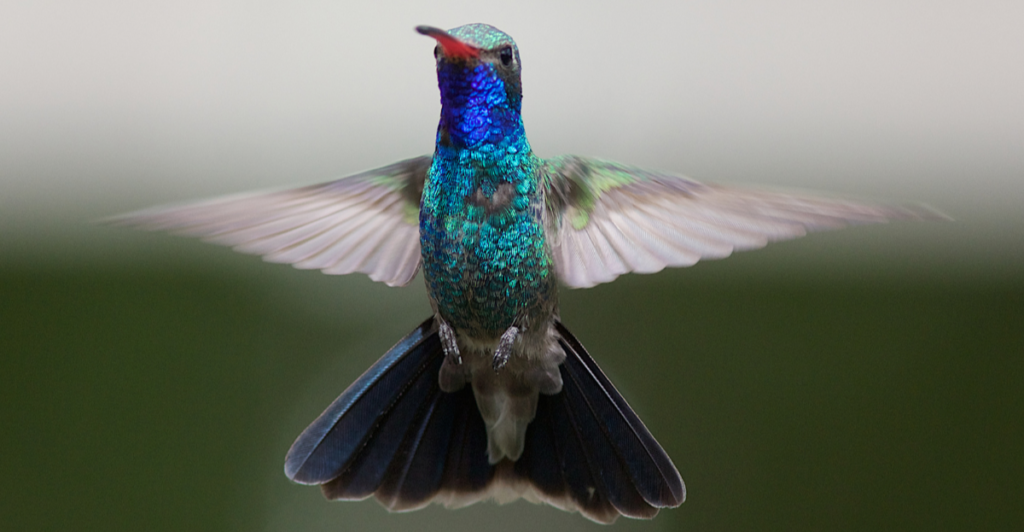
The Broad-billed Hummingbird is known for its vibrant coloration. Males have a bright blue-green body, a dark blue tail, and a distinctive red bill with a black tip. These birds are typically found in desert canyons and mountain streams in the southwestern United States and are known for their rapid, darting flight patterns.
Discover more of our trending stories and follow us to keep them appearing in your feed

12 Flowering Perennials That Are Hummingbird Magnets
The Perfect Birdbath to Attract Hummingbirds to Your Yard
The War on Cows Is Over—And Green Extremists Have Lost
There Will Be Eruptions”: Concerns Mount as Yellowstone Supervolcano Activity Shifts
This article first appeared here
Stay connected with us for more stories like this! Follow us to get the latest updates or hit the Follow button at the top of this article, and let us know what you think by leaving your feedback below. We’d love to hear from you!







